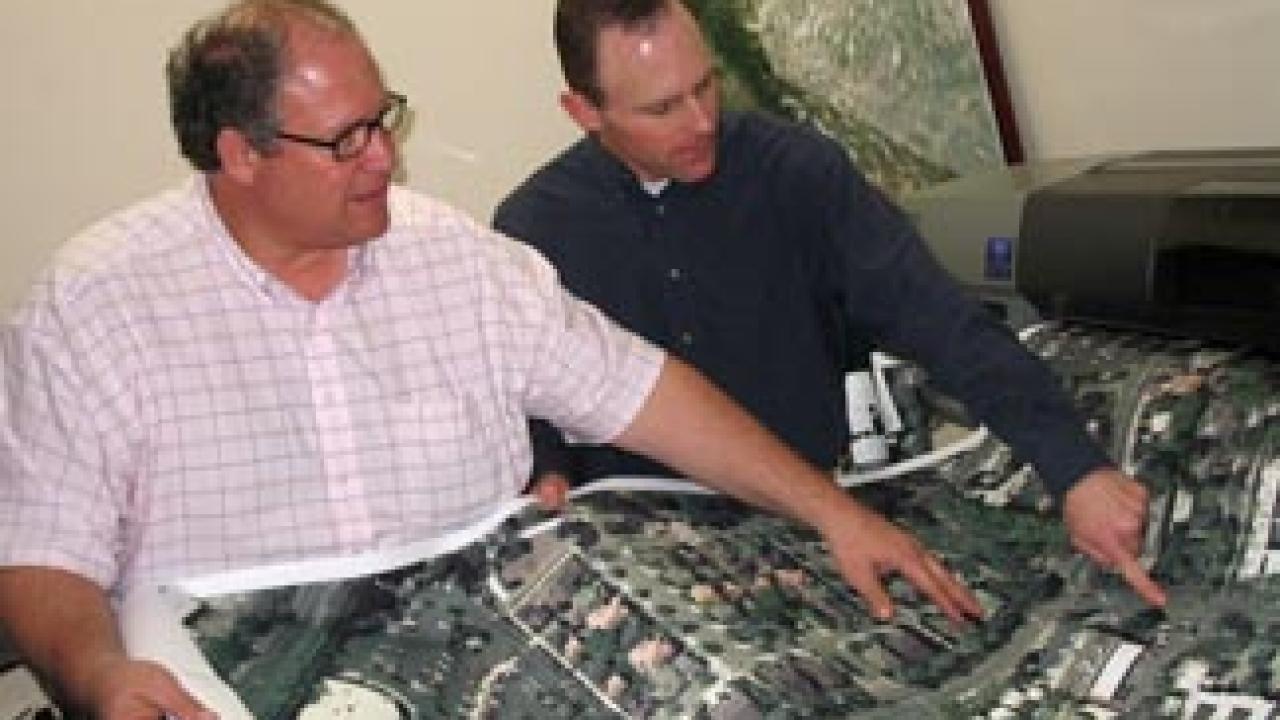Bicycling is big at UC Davis, no doubt about it. And, with something this big, planners need a big map when plotting bike route improvements to take us 20 years into the future.
How big? Six-hundred square feet, taking in all 900 acres of the core campus and then some, as far as West Village to the west and Borders books to the east.
This giant map will be laid out on the floor of Freeborn Hall on March 11, and everyone in the campus community and the city is invited to take a look at the map, walk on it -- and use felt-tip pens and Post-it notes to tag where improvements might be needed.
This workshop, in identical two-hour sessions beginning at noon and 5:30 p.m., launches the university's Bikeway and Transit Network Study, assessing not only the campus's bike routes, but pedestrian paths and Unitrans bus facilities, too.
So, who better to mark up the map than bicyclists, bus commuters and pedestrians? -- so they can show what they like and do not like, what works and what does not work, or where the university ought to put in a new bike path or roundabout, or a bus stop or sidewalk.
"We are asking people to take a close look at the place where they walk and ride every day," said Matt Dulcich of the Office of Resource Management and Planning.
Dulcich leads this planning effort, no small task in what is essentially a small city of about 30,000 students and more than 30,000 employees -- and where the bicycle is king. Surveys indicate that 17,000 to 20,000 bicyclists make their way around campus on any given day in the weather-friendly fall and spring, according to David Takemoto-Weerts, bicycle coordinator for Transportation and Parking Services.
Thousands of other people ride Unitrans, which runs 50 buses on 15 routes on campus and in the city of Davis -- carrying 3 million passengers annually.
Dulcich said bicycling's popularity and Unitrans' 40-year record of success "present the campus with a challenge to provide infrastructure for bicycling, walking and transit at a much larger scale than most communities."
"This is a very unique place for cycling," said Dulcich, a rider himself. "For example, while any other place might be able to get away with a standard, 10-foot-wide bike path, a lot of times that is only half as big as what we need."
Dulcich said the size of major bike paths and intersections is only one part of the equation. At the same time, he said, planners must address interactions between cyclists, pedestrians and buses to keep everyone safe.
The university is paying for the Bikeway and Transit Network Study with a $142,800 grant from the state Department of Transportation and $28,560 in campus funds. Fehr & Peers Transportation Consultants, based in Walnut Creek, is carrying out the study. Besides putting on next week's workshop, the consultants plan to assemble a focus group and an advisory committee, and organize another public workshop, probably in late spring.
Dulcich said campus planning documents give a "big-picture" view of the bike and transit network. The new study will get down to details to ensure that the network "serves us well 20 years into the future." Recommendations could range from the simple (better striping) to the not-so-simple (separating bicyclists and pedestrians where they now navigate the same path).
At the workshop, Dulcich said he and other planners will greet participants, explain the project and invite them to mark up the map -- which, by the way, was the brainchild of Assistant Vice Chancellor Bob Segar, campus planner.
Dulcich said people will be asked: "Where have you had a bicycle accident, and what do you think contributed to the accident? Where are your preferred routes? Are there routes that you avoid and why?"
He said pedestrians' views are welcome, too: "Are there areas where you feel unsafe, where bikes or vehicles might be a problem?"
As for the Unitrans network, Dulcich said there is no intention to change bus routing or schedules. "But we want to know where you get dropped off or where you catch the bus. Is that the right spot? If so, is it safe?"
While the resulting study is expected to rely heavily on the observations of the day-to-day users, Dulcich said, the university also will look at some questions of its own, including:
- Where should we encourage biking? On-street or off-street?
- UC Davis-specific design standards for building bicycle improvements.
- Cost estimates for recommended projects and funding opportunities.
Media Resources
Dave Jones, Dateline, 530-752-6556, dljones@ucdavis.edu
